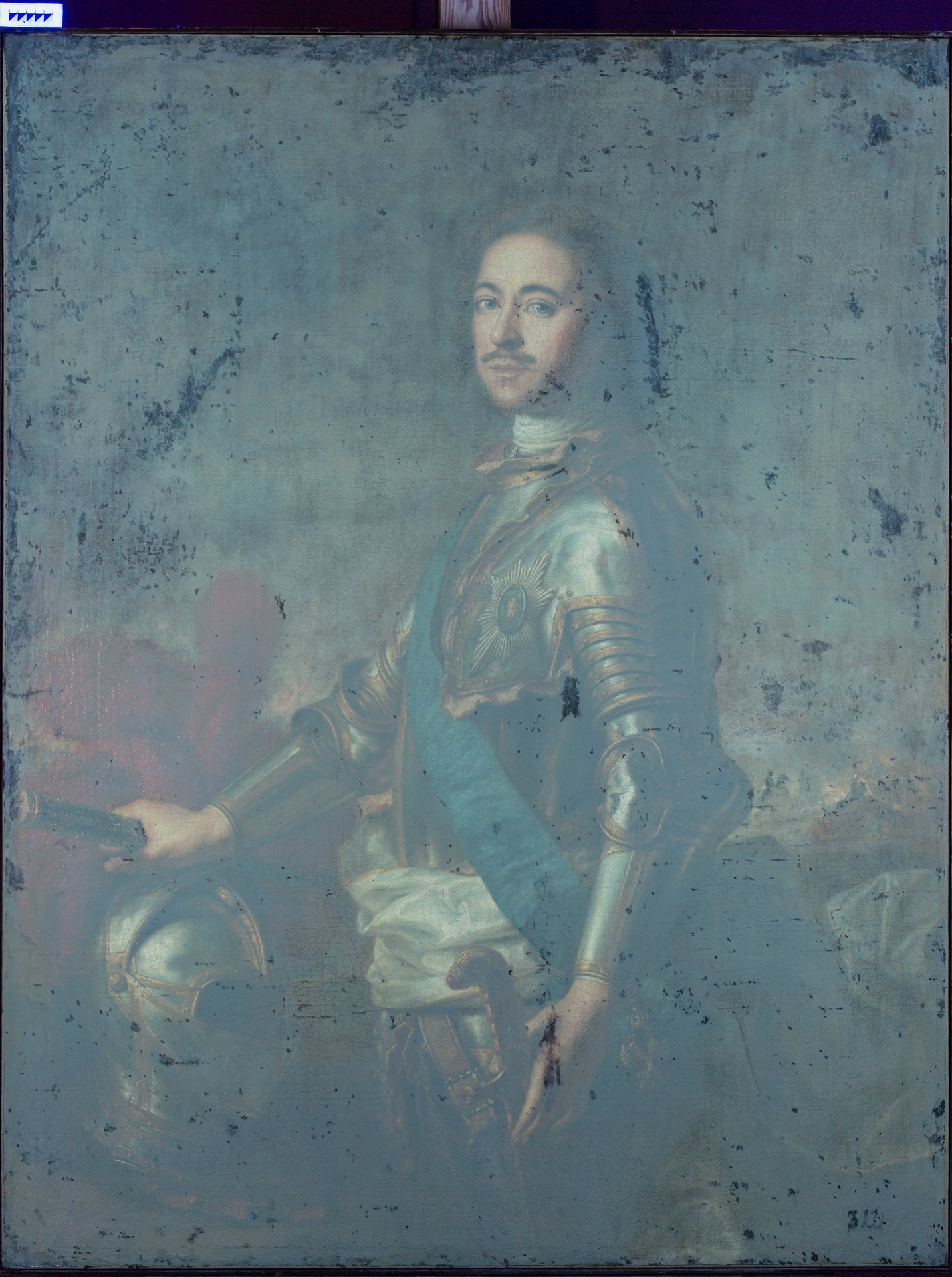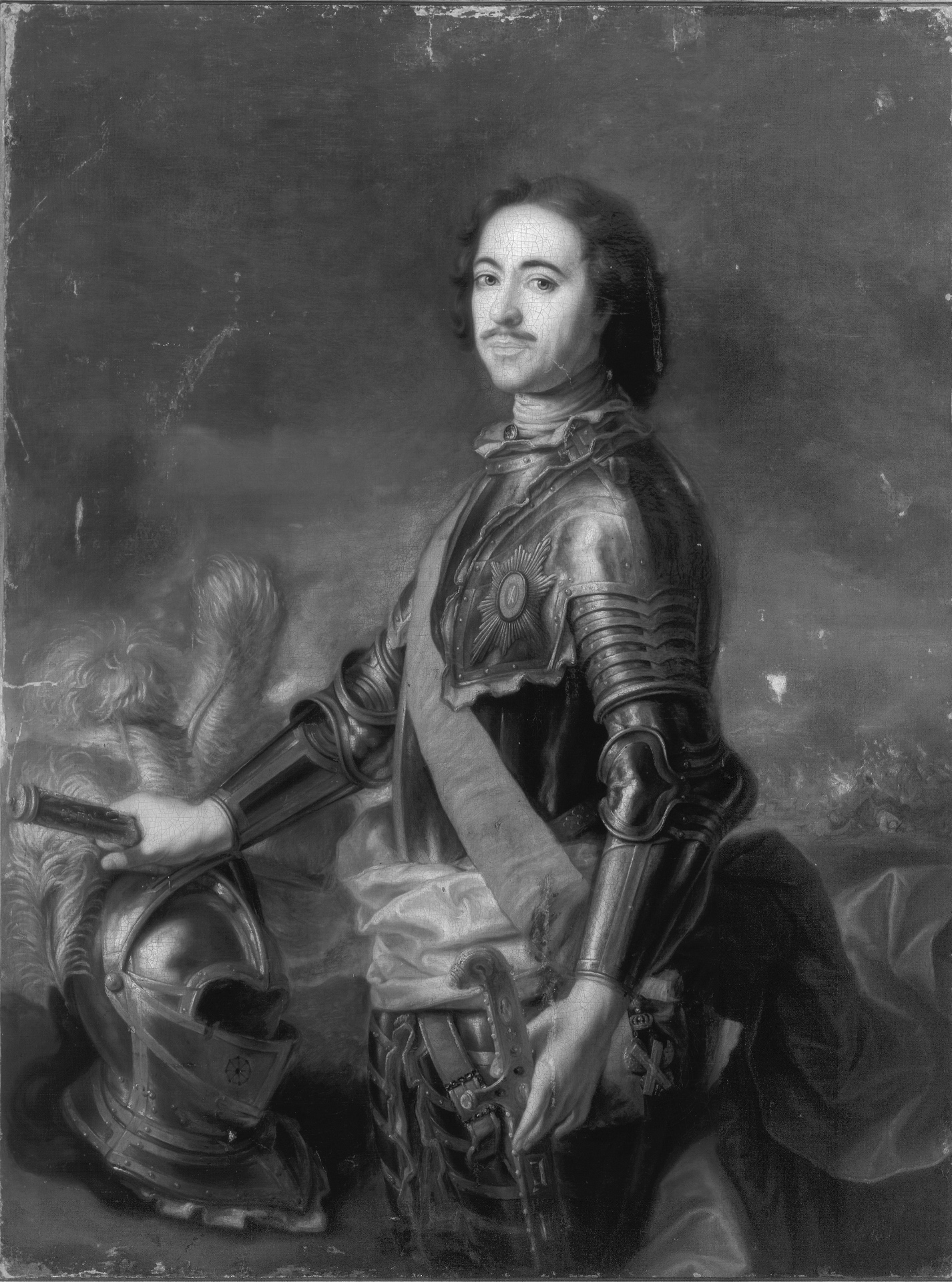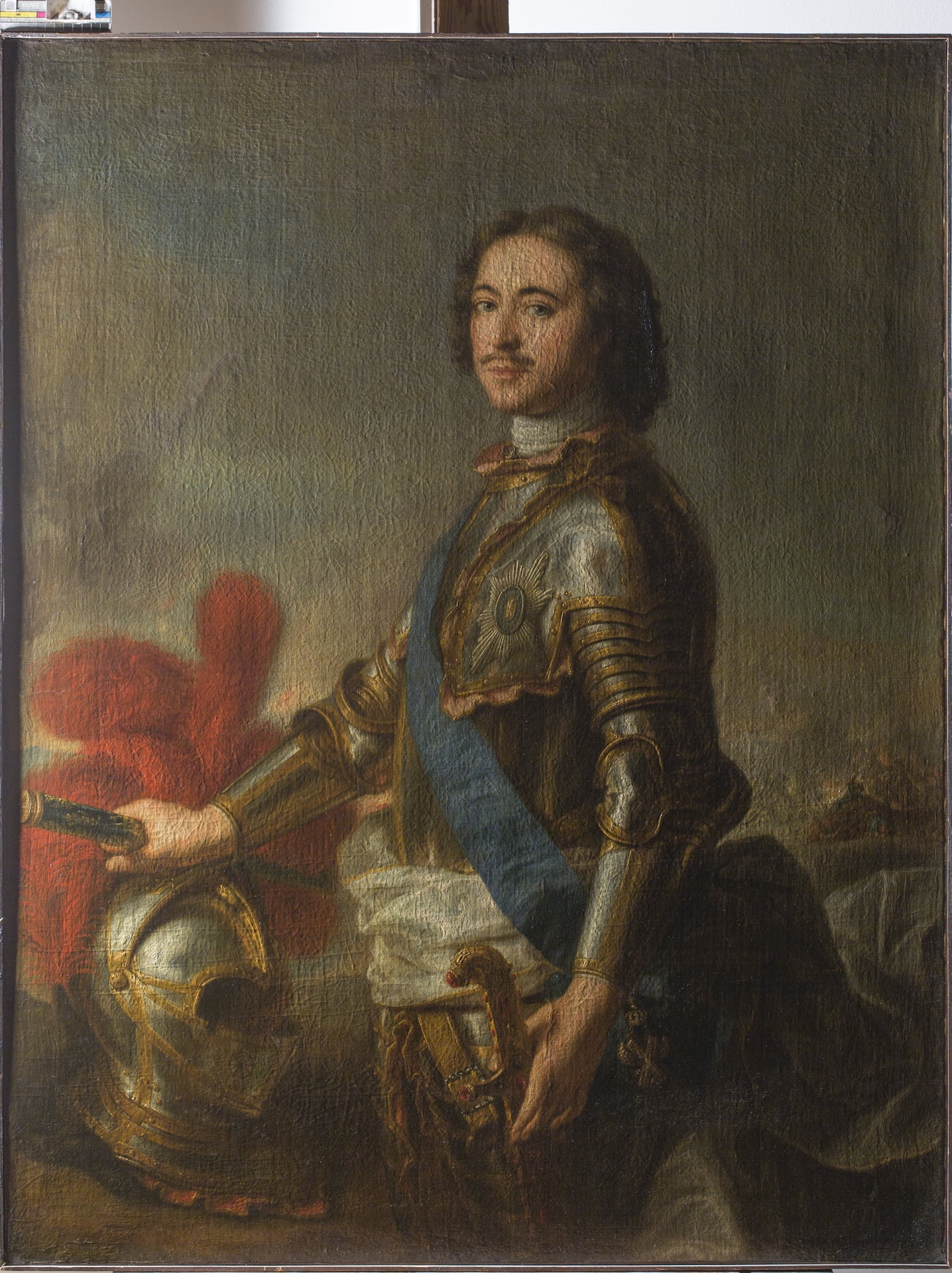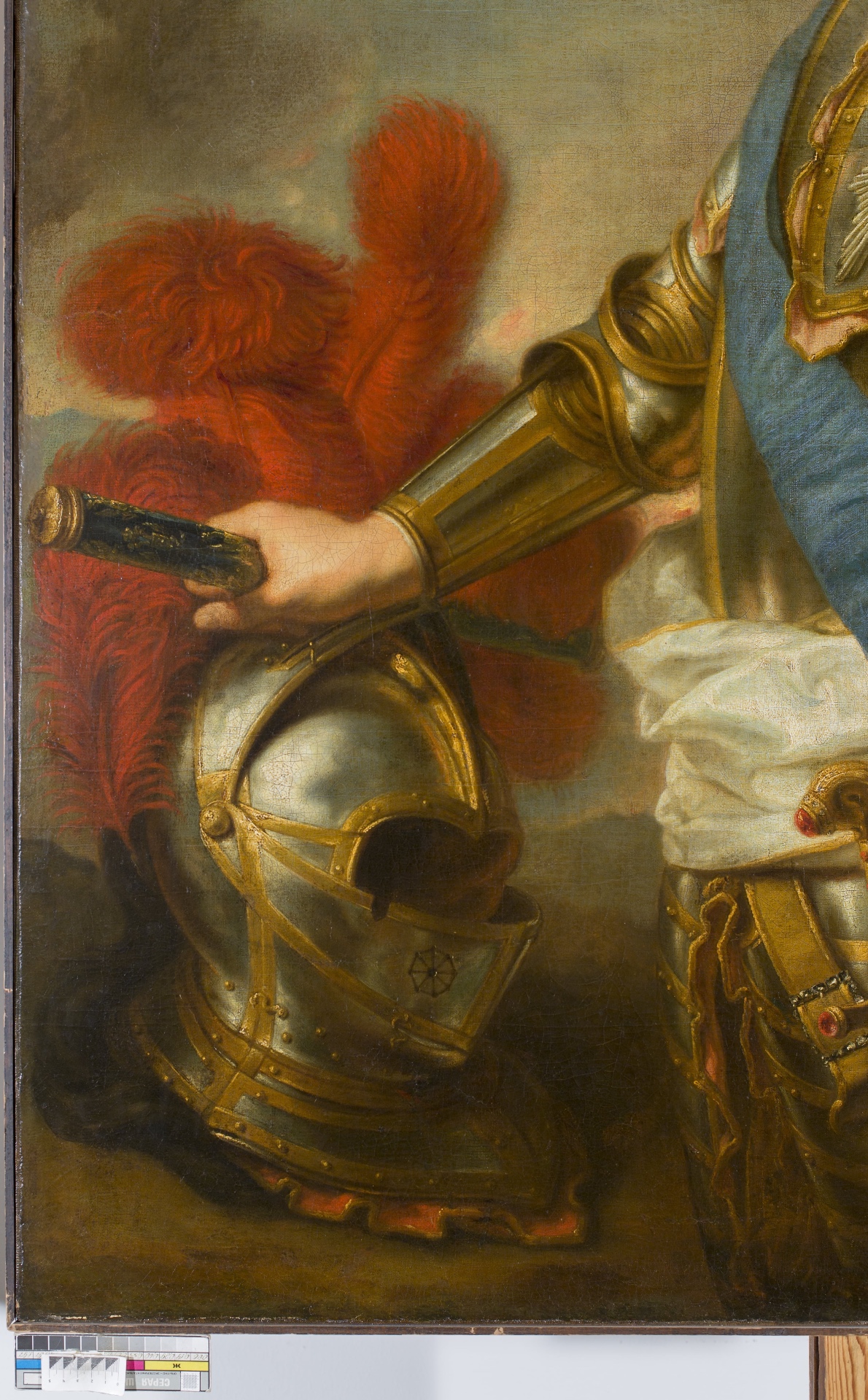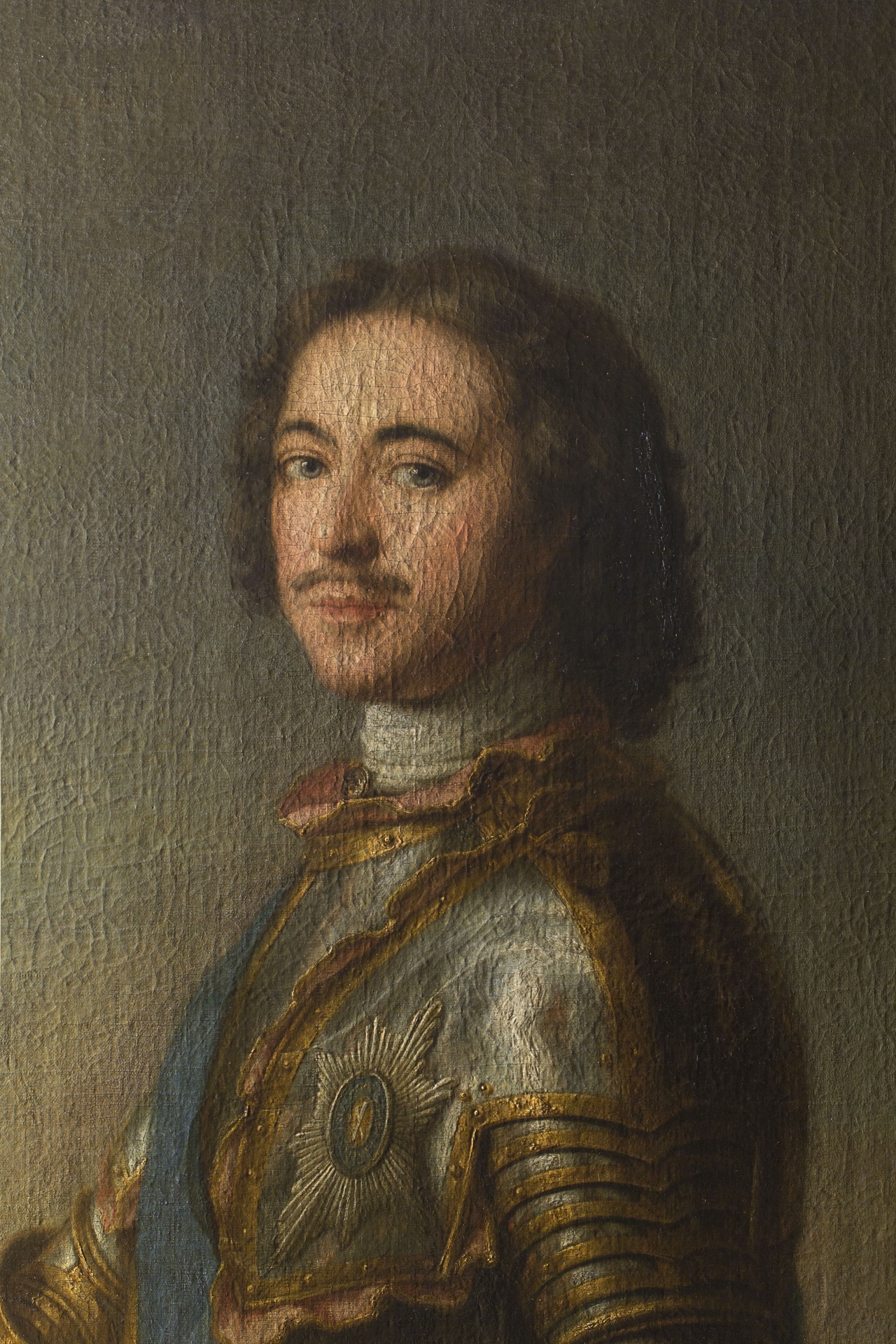Project for the restoration of Jean-Marc Nattier’s painting "A Portrait of Peter the Great"
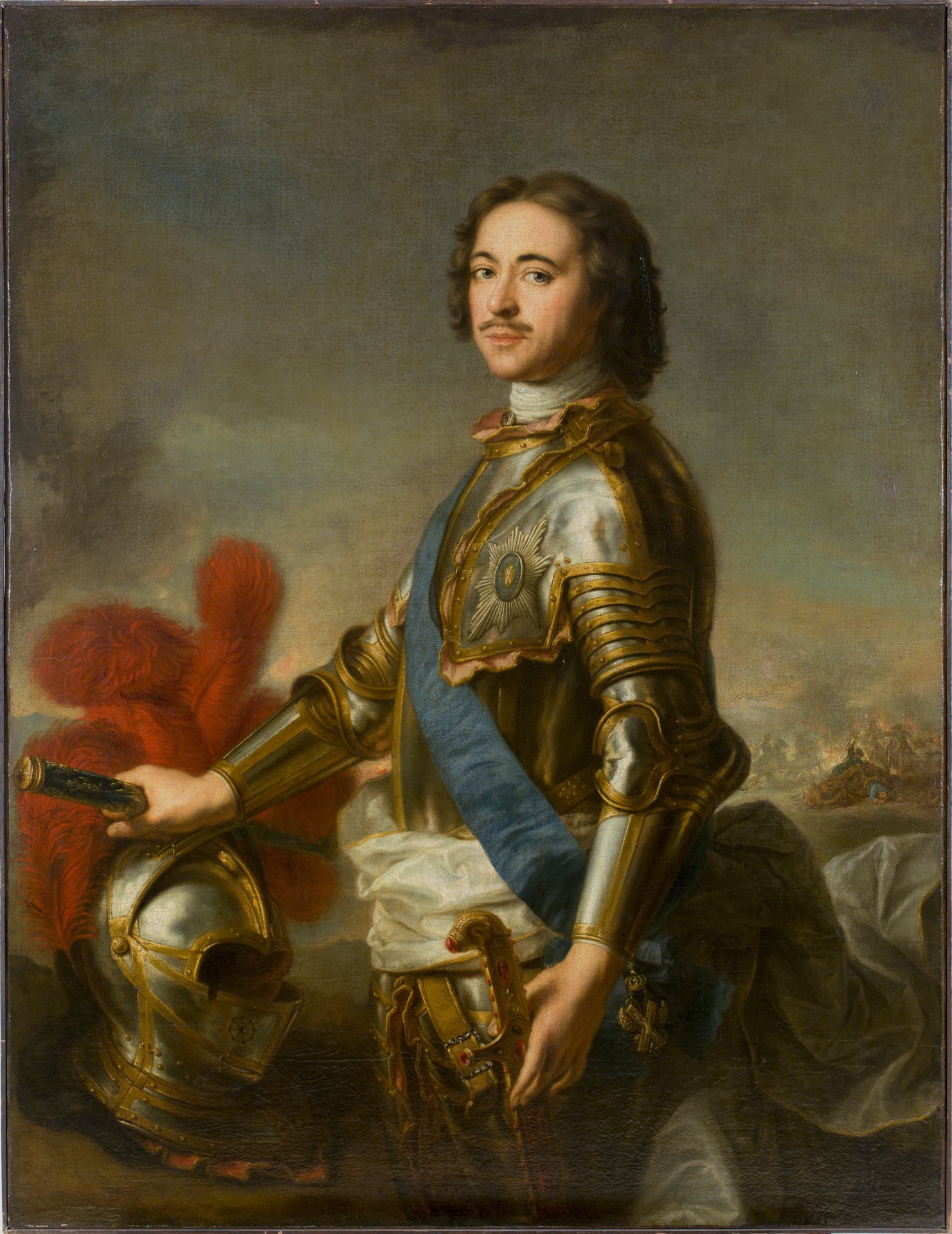
History of the Painting
In 1717 Peter the Great travelled to France, to the court of the young King Louis XV. The Tsar’s wife, the future Catherine I, was at that time in The Hague, where the artists Karel de Moor and Jean-Marc Nattier painted portraits of her that are presently in the Hermitage collection.
Peter asked Catherine to send those paintings to him and also to direct Nattier to the French capital. The Tsar liked the image of his consort that the French artist had produced and commissioned his own portrait from him as a companion piece. The work was quickly completed. At the present time, the portrait of Peter by Nattier signed and dated 1717 is in the collection of the Residenz in Munich.
Peter is presented in the guise of a military commander dressed in armour on the battlefield. The composition belongs to a type of Baroque formal portrait that was typical for the French royal court.
Nattier’s depiction of Peter the Great was very popular in the 18th century and was copied repeatedly. Today several variants of it are known (in the collections at Versailles, the Nymphenburg palace in Munich and elsewhere). It is possible to suggest with a strong degree of probability that the Hermitage picture is a copy made in France in the same year as the original.
Until 1850 the portraits of Peter I and Catherine I were kept in the Imperial Academy of Arts, after which they hung in the Hermitage’s Romanov Gallery. Later they adorned one of the halls in the Great Palace at Tsarskoye Selo. In 1931 the canvases were transferred to the State Tretyakov Gallery, but in 1947 they returned to the collection of the State Hermitage.
Description of the State of Preservation before Restoration
The painting is covered with a thick layer of badly yellowed and darkened varnishes of various dates. The uneven thickness of the old varnish coating distorts the original colour scheme and changes the chromatic and tonal appearance of the painting. Darkened restoration overpaintings of varying character and size are in evidence across the entire surface, concealing numerous losses and abrasions of the paint layer. The picture requires a range of different restoration measures to free it of later accretions.
The project envisages carrying out the following work:
- Photographic recording of the painting at all stages of the restoration process;
- Drawing up of restoration documentation;
- Physical and chemical studies of the work’s structure prior to restoration;
- Developing a methodology for reducing the thickness of the yellowed destructive varnish on test areas;
- Developing a methodology for the removal of old, altered overpaintings on test areas;
- Reducing and evening out the thick layer of old varnish across the entire surface using the methods developed;
- Removal of old overpaintings that have altered in colour and tone across the entire surface;
- Application of restoration primer in areas where the paint layer has been lost;
- Restoration of the transparency of the reduced-thickness old varnish across the entire surface;
- Coating the painting with a layer of restoration varnish;
- Making good the losses in the original paintwork;
- Refining the attribution of the work on the basis of the studies performed, the restoration and examination of historical data.
It is planned that the paired portraits of Peter and Catherine will go on display in late 2023 at the Hermitage–Ural Centre in the city of Yekaterinburg, in an exhibition about Catherine I. The event will mark the 300th anniversary of Yekaterinburg, which was named in honour of the wife of Russia’s first emperor. A presentation of the results of the restoration of these two celebrated paintings will be included in the programme of anniversary celebrations.
A working group for the restoration of the painting has been formed from the staff of the State Hermitage:
Scholarly supervisor – N.Yu. Bakhareva, researcher in the Department of the History of Russian Culture
Project co-ordinator – Ye.V. Feodorov, head of the Project Finance Sector
Project curator – V.A. Korobov, head of the Laboratory for the Scientific Restoration of Easel Paintings in the Department for Scientific Restoration and Conservation
Artist-Restorer from the Laboratory for the Scientific Restoration of Easel Painting – S.N. Bogdanov.
